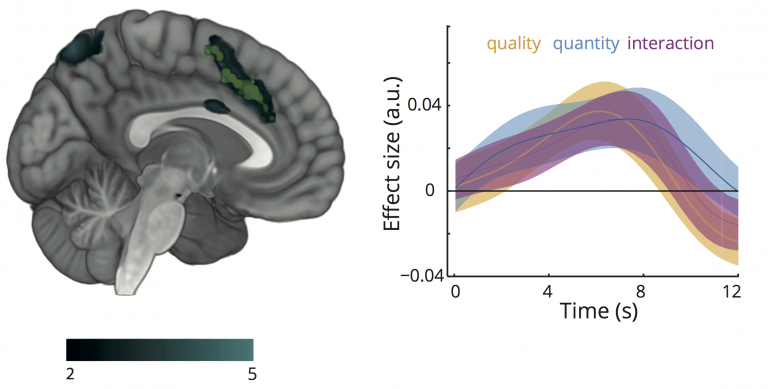Where the Brain Turns Quality and Quantity Into Value
20 November 2018
UCL researchers have pinpointed part of the human brain responsible for “on-the-fly” decision-making. According to findings in Journal of Neuroscience, the anterior cingulate cortex integrates disparate information about the desirability and amount of an option to inform choice.

Choosing between apples and oranges requires one to consider both the type of fruit and the number of items available. Equipped with this information, decision-makers weigh the quality and quantity of the options to choose the one that meets their needs. Archy de Berker and colleagues at Max Planck University College London Centre for Computational Psychiatry and Ageing Research and Wellcome Centre for Human Neuroimaging, UCL Queen Square Institute of Neurology, studied how the brain combines these two components into subjective value.
Using gift cards to assess where participants prefer to shop (quality) and how much they are given to spend (quantity), the researchers identified multiple brain regions involved in this process. Activity in the inferior frontal gyrus was associated with quality, whereas activity in the intra-parietal sulcus (IPS) was associated with quantity. Although several other parts of the brain were linked to the interaction between quality and quantity, the anterior cingulate cortex was the only one activated by all three factors.
Further information
Archy de Berker, Zeb Kurth-Nelson, Robb B Rutledge, Sven Bestmann, and Raymond J. Dolan. Computing value from quality and quantity in human decision making. Journal of Neuroscience. Available online 19th November 2018. DOI: https://doi.org/10.1523/JNEUROSCI.0706-18.2018
Max Planck University College London Centre for Computational Psychiatry and Ageing Research
Source: Society for Neuroscience
Image: ACC plus waveform. Credit: Archy de Berker et al.
 Close
Close

